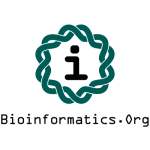
home
about argo
antibiotic resistance
classification
β - lactamase
gene finder
submit sequence
links
acknowledgements
β-lactamases
Since their introduction, the effectiveness of β-lactam antibiotics has been reduced by the occurrence of bacteria that are resistant to their mode of action. Resistant Staphylococcus aureus, was reported very soon after the introduction of benzyl penicillin into clinical practice. Resistance to this class of antibiotics is most frequently due to the production of enzymes that hydrolyze the β-lactam bond in these antibiotics, thus destroying their functionality. These enzymes are β-lactamases.
Genes encoding these enzymes are variably expressed in different organisms. β-lactamases may be plasmid, transposon or chromosome mediated. Classically these enzymes are designated by three letter code and a number( Eg. TEM-1, TEM-2 OXA-1, SHV-1). The three letter abbreviations have been taken from a variety of sources like substrate of the enzymes (CARB, FUR, IMP, OXA), It's biochemical properties(SHV, NBC), names of patients from which they were isolated (TEM, ROB), names of genes (Ampc, CepA), bacteria (AER, PSE), strains (P99), hospitals (MIR, RHH), states (OHIO) and initials of authors (HMS).
Over the past years the original β-lactamases have been mutated and emerged as extended spectrum β-lactamases (ESBLs). Most of these are mutants of original TEM-1, TEM-2 and SHV-1 enzymes with 1 to 4 amino acid substitutions in the original enzymes sufficient to alter the active site. Due to this these enzymes are able to inactivate a wide number of substrates, thereby aggravating the resistance problem. Currently Lahey clinic maintains a website stipulating criteria that a new sequence need to be met to qualify for a new number.
